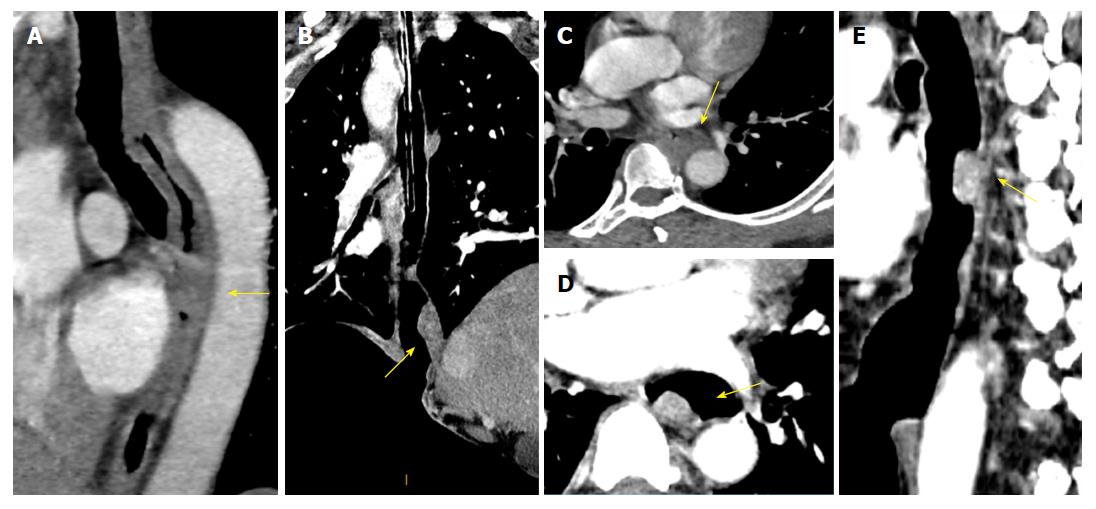Copyright
©The Author(s) 2018.
World J Gastroenterol. Sep 28, 2018; 24(36): 4197-4207
Published online Sep 28, 2018. doi: 10.3748/wjg.v24.i36.4197
Published online Sep 28, 2018. doi: 10.3748/wjg.v24.i36.4197
Figure 3 Typical cases showing the esophageal wall of group A, B and C.
A: A sagittal reformatted image obtained via 120 kVp combined with FBP reconstruction shows unlayered enhanced esophageal cancer in a 53-year old patient (yellow arrow). The esophageal wall appears to be generally thickened over a long distance but without an enhanced layer. B: Moderately enhanced esophageal cancer in the lower esophagus of a 61-year old patient. The coronal reformatted image obtained via EICT combined with GSI assist at 50 KeV shows that the lesion appears to protrude into the lumen (yellow arrow). The lumen is filled with air without esophageal wall shrinkage. C: A 63-year old patient with histopathological T2N0M0. The axial image in the venous phase shows esophageal wall thickening, but it is difficult to identify layers (yellow arrow). Due to nose or mouth leakage, non-EICT is displayed in the venous phase for this patient. D-F: The same patient as in (C); axial and sagittal images obtained via EICT combined with GSI assist at 50 KeV show the wall thickness as if a partial mass was present with a moderate enhancement in the arterial phase (yellow arrow). EICT: Esophageal insufflation computed tomography.
- Citation: Zhou Y, Liu D, Hou P, Zha KJ, Wang F, Zhou K, He W, Gao JB. Low-dose spectral insufflation computed tomography protocol preoperatively optimized for T stage esophageal cancer - preliminary research experience. World J Gastroenterol 2018; 24(36): 4197-4207
- URL: https://www.wjgnet.com/1007-9327/full/v24/i36/4197.htm
- DOI: https://dx.doi.org/10.3748/wjg.v24.i36.4197









